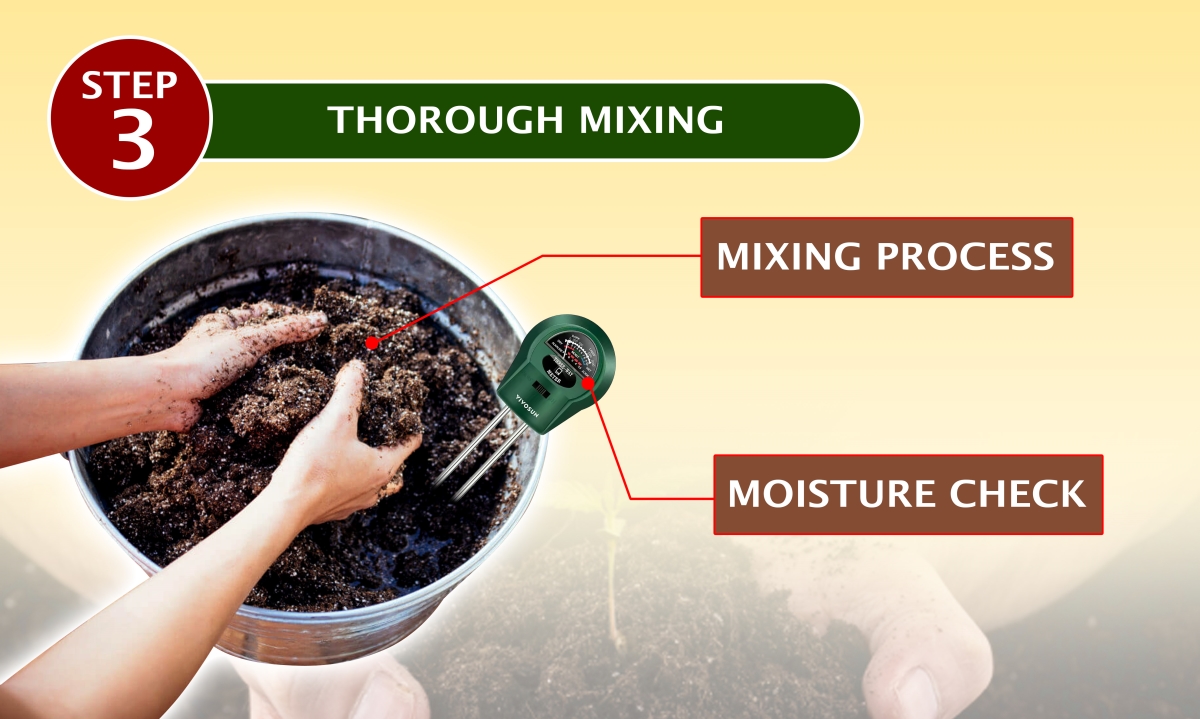Table of Contents
ToggleStarting your journey into cultivating cannabis is an exciting experience, and its success depends on the specifics of your cannabis soil recipe. In this guide, we will explore the complexities of the perfect marijuana soil recipes. Covering important components and offering expert tips, think of this as your source of soil recipe for cannabis for cultivating strong and potent cannabis plants. We will also give you a step-by-step guide how you can make your own organic cannabis soil mix at the comfort of your own home.
The Basics of Cannabis Soil Recipe
The Foundation
Crafting the perfect cannabis soil recipe starts with the soil mix. Choose a blend that offers optimal drainage, aeration, and nutrient retention. A well-aerated soil mix ensures that the roots receive sufficient oxygen, promoting healthy plant growth.
We suggests that the ideal soil mix should include a balanced combination of peat moss, perlite, and vermiculite. These components collaborate to establish an environment that maintains a perfect balance between water retention and drainage. Additionally, incorporating coconut coir can improve water retention without compromising aeration, creating an ideal foundation for your cannabis plants.
Nurturing Nutrients
While the essential nutrients include nitrogen, phosphorus, and potassium (NPK), a deeper understanding of the significance of secondary and micronutrients. Calcium, magnesium, sulfur, and trace elements play an important role in the overall health and development of your cannabis plants.
During the vegetative phase, a higher nitrogen ratio promotes robust foliage, while the flowering phase requires a shift towards higher phosphorus and potassium levels for optimal bud development. Incorporating organic sources of nutrients, such as fish emulsion and bone meal, adds a holistic dimension to your cannabis soil recipe.
Crafting the Ideal Cannabis Soil Recipe
Incorporating Compost
Master the skill of integrating compost into your cannabis soil recipe. While generic compost provides benefits, experienced growers understand the advantages of specialized compost blends. Worm castings, bat guano, and well-decomposed kitchen scraps introduce diverse microbial life into the soil, fostering a symbiotic relationship with your cannabis plants.
Beyond conventional composting methods, explore vermicomposting. Introducing red wigglers to your composting process enhances nutrient breakdown and absorption, elevating the quality of your soil. This detailed approach to incorporating organic matter sets the stage for a flourishing cannabis garden.
Perfect pH Balance
The importance of maintaining the ideal pH balance for your cannabis soil. Beyond the fundamental knowledge of pH ranges, consider the influence of soil amendments on pH stability. Introducing dolomite lime not only adjusts pH but also offers crucial calcium and magnesium, creating a stable environment for nutrient absorption.
Thorough pH testing throughout the growth cycle enables growers to precisely tailor their amendments. Understanding the symbiotic relationship between pH levels and nutrient availability ensures that your cannabis plants receive a steady and balanced diet, fostering optimal health and vitality.
Tips and Tricks for Optimal Cannabis Growth
Light and Water
The careful equalization between light and water in your cannabis cultivation. While supplying sufficient light is crucial, grasping the subtleties of light spectrum and intensity greatly influences plant development.
Think of investing in full-spectrum LED lights that emulate natural sunlight. These lights not only foster photosynthesis but also contribute to resin and cannabinoid production. In the domain of water management, adopting a drip irrigation system ensures accurate hydration, averting overwatering and underwatering scenarios. The synergy of ideal light and water conditions establishes the groundwork for robust and resilient cannabis plants.
Pest Management
Address potential threats to your cannabis plants with a proactive pest management strategy. Beyond conventional pesticides, explore natural remedies that balance effectiveness with environmental sustainability.
Incorporate companion planting, where certain plants discourage pests, forming a natural barrier. Introduce beneficial insects like ladybugs and predatory mites to establish a biological defense against common pests. Regular monitoring and early intervention are key elements of a successful pest management plan, ensuring your cannabis garden stays pest-free without compromising plant health.
Crafting the Perfect Cannabis Soil Mix
Crafting the perfect cannabis soil mix is a nuanced process that involves careful consideration of ingredients and their proportions. Follow this method to create a potent and nutrient-rich soil mix for your cannabis plants:
Step 1: Gather Your Ingredients
- Premium Potting Soil: Start with high-quality potting soil as the base. Look for a blend that includes mycorrhizal fungi, promoting a symbiotic relationship with plant roots.
- Perlite and Vermiculite: Measure out perlite and vermiculite to enhance aeration and drainage. Recent studies highlight the benefits of expanded perlite in promoting root development.
- Composted Organic Matter: Collect well-aged compost, considering diverse blends with seaweed and kelp for added micronutrient diversity.
- Bone Meal and Blood Meal: Measure bone meal and blood meal to provide essential phosphorus and nitrogen for vigorous root development and robust flowering.
- Dolomite Lime: Measure dolomite lime to maintain the optimal pH balance for nutrient absorption.
Step 2: Proportions and Mixing
- Begin with the potting soil as the primary component, constituting about 50-60% of the mix.
- Add perlite and vermiculite in equal proportions, each contributing around 15-20% to the mix. Mix thoroughly to distribute evenly.
- Incorporate compost, aiming for 10-15% of the mix. Ensure it’s well-aged and diverse in organic content.
- Introduce bone meal and blood meal, each contributing approximately 5% to the mix. These components enhance nutrient profiles for different growth stages.
- Add dolomite lime at a rate of 1-2 cups per cubic foot of soil mix to maintain the optimal pH balance.
Step 3: Thorough Mixing
- Mixing Process: Thoroughly mix all ingredients in a large container or wheelbarrow. Ensure an even distribution of components to create a homogeneous soil mix.
- Moisture Check: Check the moisture level during mixing. Aim for a mix that holds together when squeezed but crumbles easily when disturbed.
Step 4: Testing and Adjustments
- pH Testing: Test the pH of the soil mix using a reliable pH testing kit. Adjust the pH if necessary by adding more dolomite lime for an alkaline shift or sulfur for an acidic shift.
- Nutrient Check: Conduct a nutrient analysis if possible to ensure a balanced nutrient profile. Adjust nutrient levels as needed based on your cannabis plant’s growth stage.
Step 5: Finalizing Your Cannabis Soil Mix
- Curing Period: Allow the soil mix to cure for at least two weeks before using it for cultivation. This ensures microbial activity is established and nutrients are readily available.
- Storage: Store any excess soil mix in a cool, dry place for future use. Ensure it remains protected from contaminants and maintains its quality.
By following this method, you’ll create a well-balanced cannabis soil mix that provides the necessary nutrients and conditions for your plants to thrive throughout their growth cycle. Adjustments can be made based on specific strain requirements and environmental factors.
FAQs
Q: How often should I water my cannabis plants?
A: Watering frequency depends on various factors such as climate, pot size, and plant size. Ensure the soil is slightly dry before watering, and invest in a soil moisture meter for precise monitoring.
Q: Can I use garden soil for my cannabis plants?
A: It’s not recommended, as garden soil may lack the necessary aeration and drainage properties. Opt for a well-balanced potting mix instead, specifically formulated for cannabis cultivation.
Q: What’s the best lighting for indoor cannabis cultivation?
A: High-intensity discharge (HID) lights or full-spectrum LED lights are ideal for indoor cannabis cultivation. Consider the wattage and light spectrum to tailor lighting to your specific cannabis strains.
Q: Do I need to adjust nutrient levels during different growth stages?
A: Yes, tailor the nutrient levels based on the specific needs of your plants during each growth stage. Conduct regular soil tests to monitor nutrient levels and make informed adjustments.
Q: How can I prevent pests in my cannabis garden?
A: Implement preventive measures such as neem oil, beneficial insects, and regular inspections to keep pests at bay. Consider introducing companion plants that naturally repel pests, creating a symbiotic and pest-resistant environment.
Q: Can I reuse the soil from the previous harvest?
A: While it’s possible, it’s recommended to refresh the soil with new amendments to ensure optimal nutrient levels. Incorporate fresh compost, adjust pH as needed, and replenish essential nutrients for continued success.




















